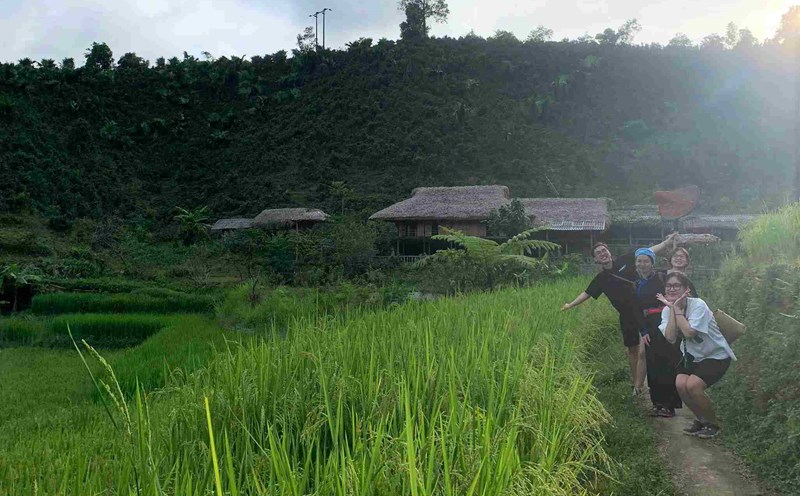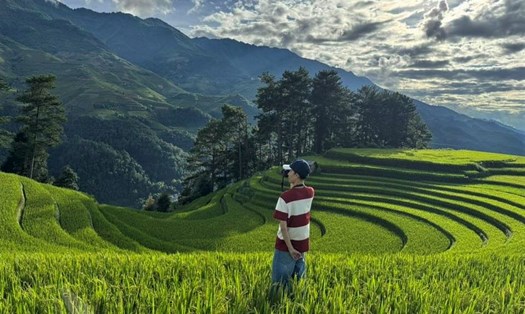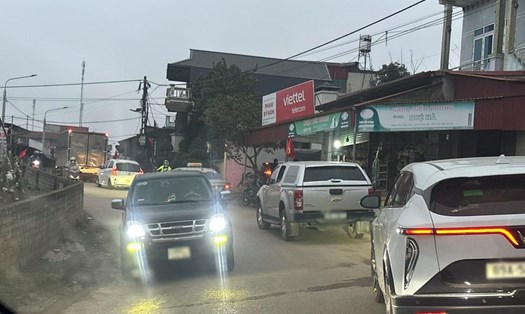On September 20, tourists flock to the terraced fields in Mu Cang Chai (Lao Cai) to visit the ripe rice season. The most crowded activity is taking photos to check-in at "hot" locations such as large Ma Xoi hill, small Ma Xoi hill, Mong Ngua hill, bamboo forest...
Last year, landslides caused by Typhoon Yagi occurred in September, and the ripe rice season in Mu Cang Chai could not welcome as many visitors as expected. However, this year the weather is nice ( little rain and cool) lasting from the end of August until now.
On weekends, hundreds of tourists take tours and travel independently to Mu Cang Chai. Typically, last weekend (September 13 and 14) and this weekend (September 20 and 21), famous rice-rich check-in spots have seen tourists lining up and jostling to find photos.
The traffic jam scene from afternoon to over 7pm on September 20 was shared by many tourists and local guides. Especially the road from Mong Ngua hill, Lam Xoi hill back to the town center.
Mr. Binh, a local tour guide, shared: "The road is congested for more than 1km. Winter is like a festival. Tourists should choose to avoid traveling on weekends to avoid such traffic jams.
Tourists choose Mong Ngua hill to watch the sunset, so the evening, the more visitors go up and down. Many people had to get off the pedestrian car.

The large number of visitors during the ripe rice season shows the special attraction of Mu Cang Chai. However, this rapid growth also brings great pressure on infrastructure, transportation and services, easily affecting terraced fields as well as tourists' experiences.
To make the trip more complete, visitors can choose to go on weekdays, avoid weekend peaks to limit crowded and traffic jams.
In particular, local authorities and the tourism industry need to consider solutions to regulate the flow of visitors, invest sustainably and diversify products so that Mu Cang Chai can both maintain its original beauty and meet the growing needs of tourists.






